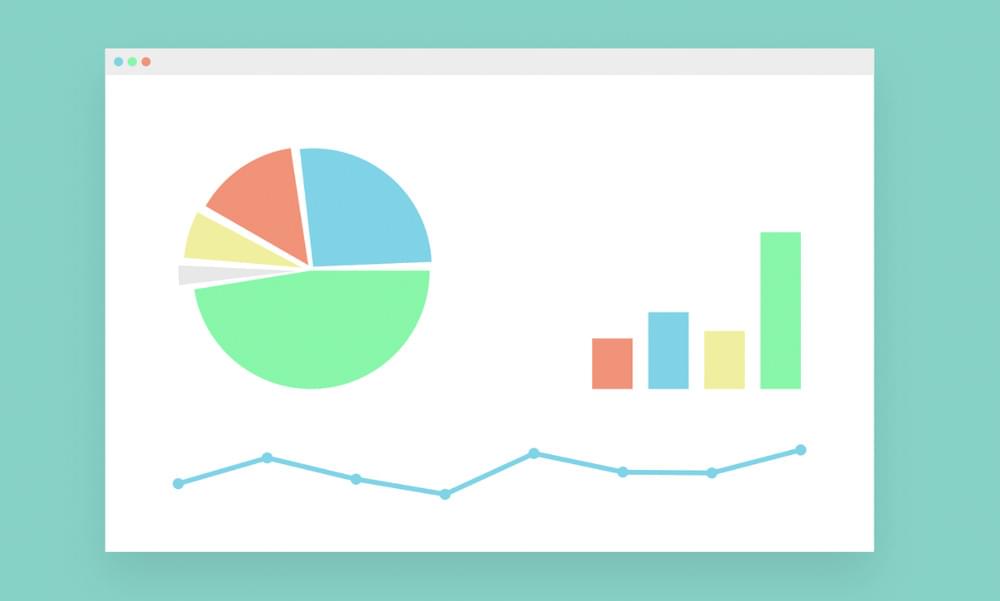It is essential to choose the right data pipeline architecture for your business to enhance the efficiency of your real-time market capture and help you with predictive analytics. Having a good pipeline structure will also provide a reduction in friction as well as promote data compartmentalization and uniformity across the pipeline.
Data Pipeline Architecture
Data pipeline architectures capture, organize, and route data to gain insights. A large number of data points may be present in raw data that is not relevant. This architecture enables data events to be organized and organized in a way that allows reporting, analysis, and the use of data to be easier.
What is the Purpose of a Data Pipeline Architecture?

There are vast volumes of data flowing inwards daily, making it necessary to have a streaming big data pipeline architecture that can handle all the data in real-time, boosting analytics and reporting. Pipelines improve data’s targeted functionality by making it usable for gaining insights into functional areas.
Through data pipelines, it is possible to enhance business intelligence and analytics by getting insights into instantaneous trends and information as they carry data in portions suited to specific organizational needs, as they carry data in portions suited to particular organizational needs. As an example, a data ingestion pipeline is a system that combines the information from different sources into a centralized data warehouse or database. It can be used to analyze data concerning the behavior and experiences of target customers, process automation, buyer journeys, and the customer experience of target customers.
The other key reason for which a data processing pipeline is essential for enterprises is that it allows them to consolidate data from various sources for comprehensive analysis, reduce the amount of effort that goes into analysis, and supply only the information required to the team or project. Administrators can constrain access to data pipelines by implementing secure data pipelines as an additional benefit. Depending on the team’s needs, they may be able to grant them access only to the data necessary for their task or objective.
The process of copying or moving data between systems requires moving it between storage repositories, reformatting it for each system, and/or integrating it with other data sources. An integrated streaming big data pipeline architecture unites these small pieces to deliver value. Furthermore, using a data pipeline reduces the vulnerability of the data at the numerous stages of its capture and movement.
Data Pipeline Architecture: Basic Parts and Processes

It is possible to categorize the design of the data pipeline into eight parts:
1. Extraction
Some fields have distinct elements, such as a zip code in an address field or a collection of multiple values, such as business categories. A data extraction program can be used if discrete values need to be extracted or certain field elements need to be masked to extract enterprise data with discrete values.
2. Joins
A data pipeline architecture design often involves joining data from various sources as part of the overall design of the data pipeline. Logic and criteria for how data is pooled in a join are defined in terms of logic and criteria.
3. Data Source
Multiple components comprise the data ingestion pipeline architecture that helps retrieve data from various sources, including relational database management systems, APIs, Hadoop, NoSQL, cloud sources, open sources, data lakes, data stores, etc. For high performance and consistency, you must follow best practices and security protocols after retrieving the data.
4. Standardization
It is not uncommon for data to need to be standardized on a field-by-field basis, depending on the nature of the data. As a result, units of measurement, dates, elements, colors, and sizes are all described in terms of units of measure, dates, elements, and codes relevant to the industry.
5. Automation
Data pipelines are often implemented several times, either on a schedule or without interruption, depending on the situation. To reduce errors in the scheduling of different processes, there is a need to automate them. It must also convey the status of the monitoring procedures to avoid problems.
6. Correction
An often overlooked error in datasets is that they have invalid fields, such as an abbreviation for a state or a zip code that no longer exists. In the same way, it is also possible for data to contain corrupt records that need to be deleted or modified differently. There is a step in the data pipeline architecture where the data is corrected before being loaded into the system at the end of the pipeline.
7. Data Loading
When the data has been corrected and is ready to be loaded, it is moved into a unified system, where it will be used for analysis or reporting after it has been updated and is ready for loading. It is usually a relational database management system or a data warehouse used as the target system. It is imperative to follow best practices for every target system to achieve good performance and consistency.
8. Monitoring
A data pipeline design ought to be scrutinized comprehensively in the same way any other system is monitored. If you want to measure, for example, when a particular job was started and stopped, its total runtime, its completion status, and any relevant error messages, for instance, you can do that. A system can’t be known to perform properly without monitoring, so it is impossible to determine whether it is performing as expected.
Related: How To Reduce Data Collection Costs? Methods, and Tips Explained
Popular Data Pipeline Applications
Data pipelines are a type of operational flow that knows how to deal with data collection, processing, and implementing, as well as allowing data to be analyzed at scale. When looking to make crucial business decisions, the idea is that the more data we can capture, the smaller the margin of error will be when analyzing that data.
The following are some of the most popular applications of a significant data pipeline:
1. Predictive Analytics
The algorithms are capable of making predictions about many different things, such as the stock market or product demand, for example. As a result of these capabilities, systems can understand human behavior patterns using historical data sets to predict potential outcomes in the future through data training.
2. Capturing Real-Time Market Data
The approach recognizes, for example, that consumer sentiment can change sporadically. This involves aggregating information from several sources, such as social media, eCommerce marketplaces, and competitor advertisements on search engines. These unique data points are cross-referenced at scale, allowing them to make better decisions, leading to a higher market share capture.
Using a data collection platform, significant data processing pipeline operational flows can be used to handle the following tasks:
3. Scalability
It is common for the volume of data to fluctuate quite a bit, which is why systems need to be equipped with the capability of activating or deactivating resources as needed.
4. Fluidity
It is essential for extensive data processing operations to deal with data in various formats (e.g., JSON, CSV, HTML) in addition to cleaning, matching, synthesizing, processing, and structuring unstructured target website data.
5. Management of Concurrent Requests
Collecting data at a large scale is analogous to waiting for drinks online at a music festival. There are a variety of concurrent requests, including short, quick lines that can be handled quickly/simultaneously. At the same time, the other line is slow/consecutive. Which line are you more comfortable standing on when these issues arise?’ How do you feel when your business operations depend on it?
Data Pipeline Architecture: How It Can Benefit Businesses?
Good data analytics pipeline architecture can play a key role in helping you streamline your day-to-day business processes in the following ways:
1. Reduction of Friction
A data pipeline reduces the friction and the ‘time-to-insight’ by reducing the amount of effort that needs to be spent on cleaning and preparing the data for analysis to support the initial analysis.
2. Uniformity of Data
It is not uncommon for data to come in a variety of formats from a variety of sources. It is essential to know that a data pipeline architecture knows how to create uniformity and copy, move, and transfer data between various depositories and systems.
3. Consolidation of Data
It is important to note that data can originate from various sources, including social media, search engines, stock markets, news outlets, consumer activities on marketplaces, etc. It is essential to remember that data pipelines are funnels that assemble all of these factors into one place where they can be managed.
4. Compartmentalization of Data
To ensure that only relevant stakeholders gain access to specific information, a pipeline architecture implemented intelligently is necessary. This helps to ensure that each actor is on track at all times.
Examples of Data Pipelines Architecture

Many factors need to be considered when planning a data pipeline architecture, such as the anticipated collection volume, the origin and destination of the data, and the type of processing that may need to transpire.
Below are three examples of archetypal data pipeline architectures that can be used as examples:
1. Batch-Based Pipeline for Data Analysis
Compared to the previous architecture, this one is more straightforward. A single system/source typically generates many data points, which are then delivered to a single destination (i.e., a facility where data is stored and analyzed).
2. Pipelines for Streaming Data
It is not unusual for Online Travel Agencies (OTAs) to collect information regarding their competitors’ pricing, bundles, and advertising campaigns. As soon as this information is processed/formatted, it is given to the relevant teams/systems for further analysis and decision-making (e.g., an algorithm tasked with repricing tickets based on the price changes between competitors). Data pipelines like this are used for real-time applications.
3. Pipelines for Hybrid Data
There is a growing trend in using this approach with large companies and environments as it allows real-time insights and batch processing/analysis. It has been observed that most corporations that opt for this approach choose to keep data in raw formats to enable increased versatility in terms of new queries and future pipeline structure changes.
ETL Pipeline vs. Data Pipeline
The purpose of ETL pipelines, which stands for Extraction, Transformation, and Loading pipelines, is typically to perform warehousing and integration. Typically, it is used for the transfer of data collected from disparate sources, transforming them into a more universally accessible format, and uploading them into a target system. It is typical for ETL pipelines to enable us to collect, store, and prepare data so that it is accessible and easy to analyze.
There is a lot of discussion about the purpose of building a data pipeline to create a system that will allow for data to be gathered, formatted, and then transferred or uploaded to our target systems. There is a difference between a data pipeline and a protocol in that a pipeline ensures that all parts of ‘the machine’ are operating as they should.
The Bottom Line
Your business must find and implement a data pipeline architecture that is right for your business. The technology you use will be essential in helping you automate and tailor solutions based on your needs, whether you choose a stream-based, batch-based, or hybrid approach.
Depending on your business, you may not find value in raw datasets. The data pipeline architecture integrates and manages critical business information using different software technologies and protocols to simplify reporting and analytics.
Data pipeline architecture can be built in several ways that simplify the process of integrating data in a way that facilitates data integration. Crawlbase is one of the best tools that you can use to automate your data pipelines since it can help you extract, clean, transform, integrate, and manage your pipelines without writing a single line of code.









